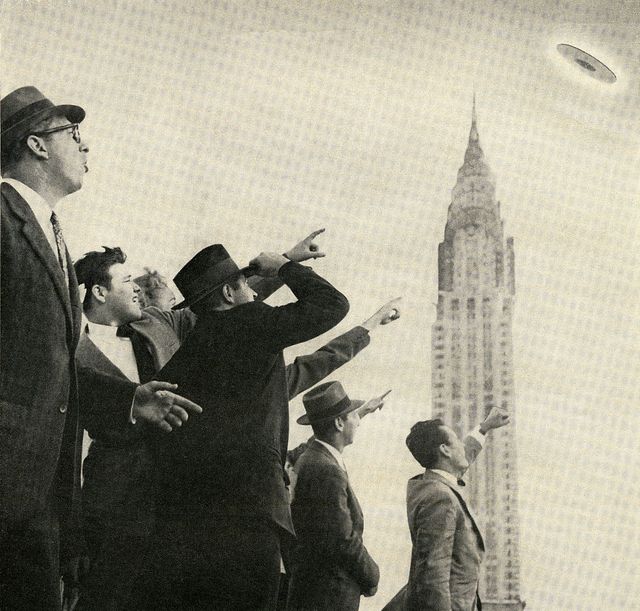This 1968 Pamphlet Uncovers How the Air Force Used to Handle UFO Sightings

GraphicaArtisGetty Images
- In 1968, the Air Force wrote a pamphlet to help people identify the source of their UFO sightings.
- The pamphlet veered people away from the extraterrestrial angle, instead suggesting that their sightings were caused by perfectly natural phenomena.
- Today, the Department of Defense has an entire group dedicated to the investigation of what it calls “unexplained aerial phenomena.”
The 1960s were a tumultuous era in American history, and one of the milder controversies of the time was the phenomenon of unidentified flying objects, or UFOs. In response to more than 10,000 reported UFO sightings, the U.S. Air Force decided to release a pamphlet, Aids to Identification of Flying Objects, that gently steered people with UFO sightings away from thoughts of flying saucers and aliens and toward more grounded explanations. It marks a stark contrast to how the Pentagon handles UFOs, or what it now calls unidentified aerial phenomena (UAPs), in the modern day.
🛸 You’re obsessed with aliens. So are we. Let’s nerd out over them together—join Pop Mech Pro.
The Department of Defense tasked the Air Force with investigating UFO sightings in 1947, and by 1966 it had amassed 11,207 sighting reports. The investigations, carried out by the Air Technical Intelligence Center, had identified an explanation for all but 675 of the sightings. In 1968, the Air Force published the pamphlet, drawn from the University of San Diego library and uploaded by an anonymous blogger going by the pseudonym Isaac Koi.
The Air Force comes out swinging in the document, going down a long list of perfectly natural phenomena reported by people it admits are more often than not “reliable, stable, and educated.”
As for aliens, the Air Force saves commentary for that at the end. In a FAQ of sorts, the authors state: “No evidence has been submitted to or discovered by the Air Force that identified sightings represent technological developments or principles beyond the range of our present scientific knowledge. There has been no tangible evidence to indicate that unidentified sightings are extraterrestrial vehicles under intelligent control.”
Do UFOs constitute a threat? “No UFO,” the memo flatly states,” has been determined to represent a threat to our national security.”
That’s not quite how today’s Department of Defense sees it. In November 2021, more than 50 years later, the DoD established the Airborne Object Identification and Management Synchronization Group (AOIMSG). The memo that established the group cites “the presence of unidentified aerial phenomena in Special Use Airspace represents a potential safety of flight risk to air crews and raises potential national security concerns.”
Special-use airspace is typically military-controlled airspace, where training exercises, live fire shoots, and other potentially dangerous activities take place. The Department of Defense is likely referring to UAP sightings on both the East and West Coasts reported to have been made by fighter pilots between 2004 and 2018. Mysterious drones have also been spotted in the airspace over nuclear facilities, including a September 2020 incident at Arizona’s Palo Verde nuclear power plant. The airspace over nuclear power plants is typically restricted.
On one hand, the Pentagon is taking UFOs/UAPs more seriously than in the past. On the other hand, it has expanded the definition to include obvious drone sightings that some have concluded are the work of a foreign power. The sightings, lacking a clear explanation and taking place in restricted airspace, must be investigated. Still, the military is not really giving much, if any, ground in conceding that extraterrestrials are behind any of the sightings. Just like in 1968, its official explanation is that people are seeing something … but instead of aliens, it could be a drone operated by a Russian spy.
This content is created and maintained by a third party, and imported onto this page to help users provide their email addresses. You may be able to find more information about this and similar content at piano.io




